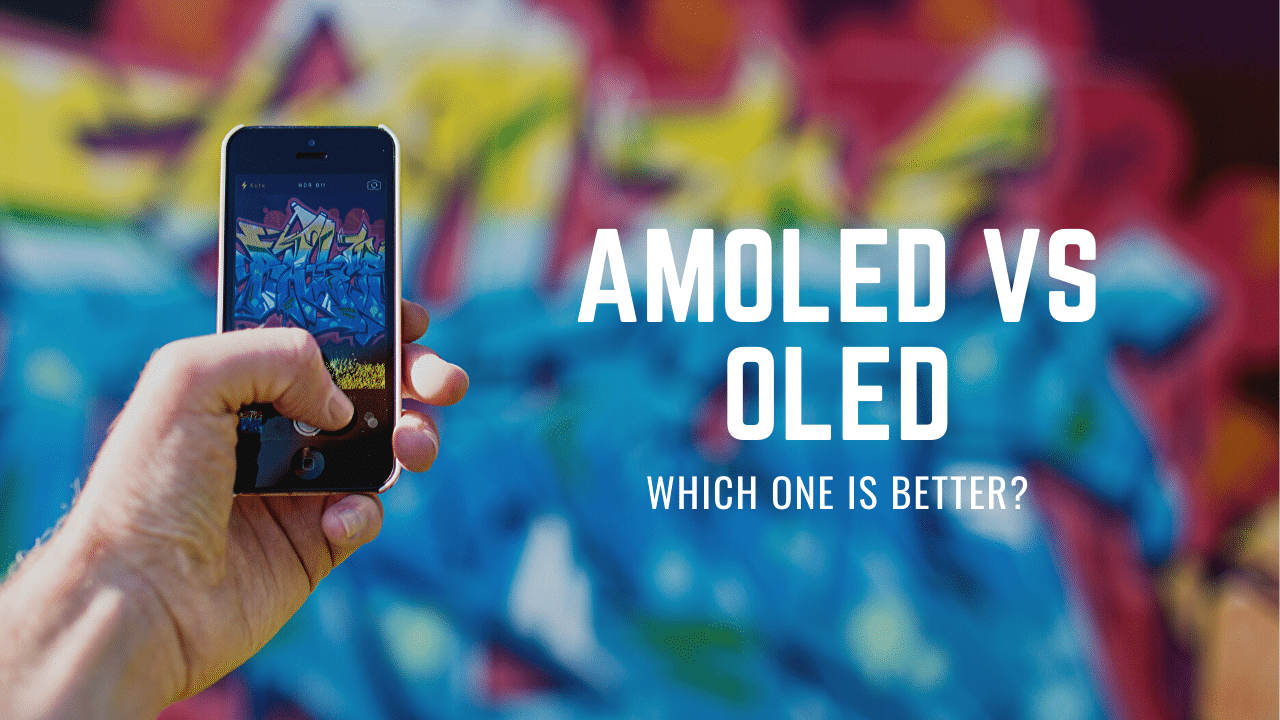In this digital age, you can’t spend a minute without your smartphone. Smartphones have become central to our lives. They’ve been incredibly useful in many ways, but have also changed our behaviour and lives in ways we may not have realised, and may not like.
Before purchasing any Smartphone, everyone goes through a list of specifications. This list includes display type, screen size, battery backup, supported operating system, total internal memory, and many others. Today, A smart digital display is the core thing for mobile, laptops or TVs.
When you are going to buy a smartphone, laptop, PC, Tab or any device that has a display, you get a little bit of confusion to buy which display is better LED or LCD. Commonly people already got the answer that LED is better because An LED display uses less power, provides a brighter display with better contrast, a thinner panel, and lesser heat dissipation than a conventional LCD display.
There is a variety of LED displays now on the market hard to choose one. There is always a war Amoled and Oled display. In this article, we will know about the feature, advantages, disadvantages, property of both AMOLED and OLED.
First of all, we will discuss OLED and then AMOLED

What is OLED?
OLED (Organic Light-Emitting Diodes) is a flat light emitting technology, made by placing a series of organic thin films between two conductors. When an electrical current is applied, a bright light is emitted. OLEDs are emissive displays that do not require a backlight and so are thinner and more efficient than LCD displays (which do require a white backlight).
OLED displays are not just thin and efficient – they provide the best image quality ever and they can also be made transparent, flexible, foldable and even rollable and stretchable in the future. OLEDs represent the future of display technology!
Type Of OLED:
There are several types of OLEDs:
- Passive-matrix OLED (PMOLED): PMOLEDs have strips of the cathode, organic layers and strips of the anode. The anode strips are arranged perpendicular to the cathode strips. The intersections of the cathode and anode make up the pixels where light is emitted.PMOLEDs are most efficient for text and icons and are best suited for small screens (2- to 3-inch diagonal) such as those you find in cell phones, PDAs and MP3 players.
- Active-matrix OLED (AMOLED): AMOLEDs have full layers of the cathode, organic molecules and anode, but the anode layer overlays a thin film transistor (TFT) array that forms a matrix. They are efficient for large displays.
- Transparent OLED (TOLED): Transparent OLEDs have only transparent components (substrate, cathode and anode). This technology can be used for heads-up displays.
- Top-emitting OLED (TEOLED): Top-emitting OLEDs have a substrate that is either opaque or reflective. used in smart cards.
- Foldable OLED (FOLED): Foldable OLEDs have substrates made of very flexible metallic foils or plastics. Foldable OLEDs are very lightweight and durable. It can be used in ell phone, GPS receiver etc.
- White OLED (WOLED): White OLEDs emit a white light that is brighter, more uniform and more energy-efficient than that emitted by fluorescent lights.They can replace fluorescent lights
Application of an OLED:
The OLEDs are widely used in different areas or fields such as:
- Lighting Applications: OLED lighting has illumination of higher quality, varied panel shapes, and better-diffused light sources. Philips Lighting has OLED lighting products, sold as Lumiblade and it is available online.
- Mobile Phones: The N85 and N86 phones by Nokia were one of the first to use the OLED display. But now, they are ubiquitous.
- Television Sets: Sony, LG, and Samsung are some of the major giants in the industry pushing the use of OLED in television sets.
- Others: The OLED technology is also used in the fashion industry, the automotive sector, production of cameras, and video games
OLED Advantages
OLEDs offer many advantages over both LCDs and LEDs:
- Flexibility: Because the light-emitting layers of an OLED are lighter, the substrate of an OLED can be flexible instead of rigid. OLED substrates can be plastic rather than the glass used for LEDs and LCDs.
- Brightness: OLEDs are brighter than LEDs. Because the organic layers of an OLED are much thinner than the corresponding inorganic crystal layers of an LED.
- Lightweight: One common hallmark of technological advancement is miniaturization and flexibility. Thankfully, OLED displays are fabricated on flexible plastic substrates and this is even causing researchers to consider using the material for other designs. Some other applications might include roll-up displays embedded in fabrics. OLEDs are also shatter-resistant.
- Response time: When compared to LCDs, the response time of OLEDs is far better.
Problems with OLED
OLED seems to be the perfect technology for all types of displays, but it also has some problems:
- Lifetime – This is one of the biggest and most worrisome drawbacks to OLEDs. A report on OLED TV panels showed that the blue luminance degrades by 1000 hours after 1000 hours while the red and green degrade by 7% and 8% respectively.
- Manufacturing – Manufacturing processes are expensive right now.
- Water-Water Remember that OLED is organic material. This means that they are prone to damage caused by water
- Power consumptions: OLEDs are perfect for displaying an image that is fundamentally black, consuming just 40% of the power consumption of an LCD for the same image.
What is AMOLED?
AMOLED is a display technology and stands for Active Matrix Organic Light-Emitting Diodes. It is a type of OLED display and is used in smartphones.AMOLEDs have full layers of the cathode, organic molecules and anode, but the anode layer overlays a thin film transistor (TFT) array that forms a matrix.
Given its astounding 100,000:1 contrast ratio, Super AMOLED displays will automatically adapt to various lighting environments to make it easier on the eyes while providing great picture quality when playing games or watching your favourite multimedia.
Type Of AMOLED:
- Super AMOLED
- Super AMOLED Advanced
- Super AMOLED Plus
- HD Super AMOLED
- HD Super AMOLED Plus
- Full HD Super AMOLED
- Quad HD Super AMOLED
Application of an AMOLED:
The OLEDs are widely used in different areas or fields such as:
- Smartwatches: AMOLED is hugely used in making the display of smartwatches.
- Mobile Phones: Mobile industry completely shifted AMOLED.LG, Samsung, Xiaomi, and Apple also focused on AMOLED even if Super AMOLED.
- Others: The AMOLED technology is also used in the fashion industry, the automotive sector, production of cameras, video games, Music Players etc.
AMOLED Advantages
OLEDs offer many advantages over both LCDs and LEDs:
- Energy Efficient: Because each diode or pixel generates light itself, an AMOLED panel does not require backlighting for colours and images to become visible unlike in LCD.thats why Lower power consumption or better energy efficiency, when compared against other display technologies such as LED, OLED and LCD, is one of the advantages of AMOLED.
- Thinker& flexible: An organic plastic layer of AMOLED is thinner, lighter, and more flexible than the rigid crystalline layers of the LCD display.
- High Contrast: High contrast ratio or the difference between the brightest whites and the darkest blacks is another advantage of AMOLED.
- Super Display Quality: This display technology also has a better viewing angle than high-end IPS panels.
Problems with AMOLED
OLED seems to be the perfect technology for all types of displays, but it also has some problems:
- Lifetime – A significant limitation of AMOLED is its shorter lifespan or evident degradation
- Outdoor visibility– Images in an AMOLED panel are difficult to view under direct sunlight as compared to an IPS panel.
- Water-Water AMOLED panels are very prone to water damage.
AMOLED VS OLED:
If you are searching on the web for AMOLED VS OLED, you are actually having a wrong search because AMOLED is one type of OLED. Whatever of course there has a difference between them. AMOLED is the Advanced form of OLED.
1. Display size
OLED is much thinner in size, that’s why is lightweight is well. So because of being thinner, OLED is used in larger devices like TV, and laptops.AMOLED being less thinner can be used in smartphones, tablets etc. Having different aspects of uses Both OLED and AMOLED are top-level performers in their fields.
2. Technology
OLED comprises the thin organic light-emitting material that emits light when electricity is applied. But It is an advanced version of OLED with an additional layer of thin-film transmitter. Higher technology used in AMOLED as storage capacitors are used to maintain the pixel states.
3. Flexibility
OLED is Less flexible than AMOLED displays. But second-generation OLED is getting flexibility in future
3. Display Quality
The AMOLED display quality is much better than the OLEDs as it contains an additional layer of TFTs and follows backplane technologies.OLED display much deeper blacks as compared to AMOLED displays. You cannot see the screen in AMOLED display under direct sunlight.
4. Cost
As higher technology is in use AMOLED is very much expensive compared to OLED.because of higher manufacturing costs.
Conclusion:
AMOLED is the Advanced form of OLED. As there is a name Advanced attached to it its performance is good is well. So if you are thinking to buy a smartphone you should go for AMOLED/Super AMOLED smartphone. And for TV or Laptop, you can still go for OLED

